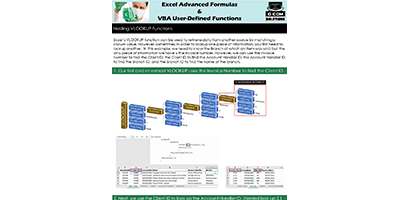Unlock the Hidden Potential – Remove Total Rows in Excel Tables Using Power Query like a Pro!
Introduction
In today’s fast-paced digital world, data plays a crucial role in decision-making processes. Microsoft Excel has been a go-to tool for managing and analyzing data for years, and its capabilities are continually expanding. One powerful feature that often goes unnoticed is Power Query. This tool empowers users to manipulate and transform data with ease. In this article, we will explore how you can unlock the hidden potential of Power Query by learning how to remove total rows in Excel tables efficiently.
Understanding Power Query
Before we dive into the process of removing total rows, it’s essential to have a basic understanding of Power Query. Power Query is an Excel add-in that enables users to perform data cleansing, transformation, and integration tasks seamlessly. With its user-friendly interface and powerful functionalities, it simplifies complex data manipulation tasks.
Working with Excel Tables
Excel tables provide a structured way to organize and analyze data. They offer various advantages such as dynamic ranges, easy sorting and filtering, and automatic formatting. However, when working with large datasets, it’s common to encounter tables with total rows, which can interfere with data analysis and calculations.
Why Remove Total Rows?
Total rows, often generated by functions like SUM or AVERAGE, summarize data within a table. While they can be useful for quick insights, they might hinder certain data analysis operations. Removing total rows allows for more accurate calculations and seamless integration with other data sources.
The Limitations of Traditional Methods
Traditionally, users have relied on manual methods to remove total rows from Excel tables. These methods involve manually deleting or filtering rows, which can be time-consuming, error-prone, and not scalable. Furthermore, if the data in the table changes frequently, these manual methods become impractical.
Introducing Power Query
Here’s where Power Query comes to the rescue. It provides a streamlined and automated way to remove total rows, ensuring accuracy and efficiency. By leveraging Power Query’s transformation capabilities, you can eliminate the need for manual intervention and build a reliable data processing workflow.
Step-by-Step Guide to Removing Total Rows
Let’s walk through a step-by-step process to remove total rows from an Excel table using Power Query:
Step 1: Open Power Query
To start, open Microsoft Excel and navigate to the “Data” tab. Click on “Get Data” and select “From Table/Range.” This action launches Power Query and allows you to connect to the Excel table.
Step 2: Connect to Excel Table
In the Power Query Editor, ensure that the correct table is selected for transformation. You can preview the data, make adjustments, and apply any necessary filters.
Step 3: Transform Data
In this step, you can perform various data transformations using Power Query’s intuitive interface. You can remove columns, filter rows, change data types, and apply other transformations to suit your needs.
Step 4: Remove Total Rows
To remove total rows, locate the column that contains the total values. Right-click on the column header and select “Remove Rows” ➜ “Remove Blank Rows.” This action eliminates the total rows and ensures that only the relevant data remains in the table.
Step 5: Load Data into Excel
After removing the total rows, you can choose to further refine the data or proceed with loading it back into Excel. Click on the “Close & Load” button in the Power Query Editor to load the transformed data into a new worksheet or an existing one.
Benefits of Using Power Query
By utilizing Power Query to remove total rows in Excel tables, you unlock several benefits:
Time-saving: Power Query automates the process, eliminating the need for manual deletion or filtering, saving you valuable time and effort.
Accuracy: With Power Query, the risk of human error is minimized. It ensures precise removal of total rows, reducing the chances of data inconsistencies.
Scalability: Power Query is scalable, allowing you to process large datasets efficiently. Whether you’re working with a few hundred rows or millions of records, Power Query can handle the task seamlessly.
Reusability: Once you’ve set up a Power Query workflow to remove total rows, it can be easily reused for future analysis. You can refresh the data with a single click, ensuring data consistency and updated insights.
Conclusion
In conclusion, leveraging the power of Power Query to remove total rows in Excel tables is a game-changer for data manipulation and analysis. By following the step-by-step guide outlined in this article, you can streamline your data processing workflow, save time, and ensure accuracy. Say goodbye to manual methods and embrace the efficiency and reliability of Power Query.
Frequently Asked Questions (FAQs)
Q: Can I use Power Query in older versions of Excel?
A: Power Query is available as a free add-in for Excel 2010 and later versions.
Q: Will removing total rows affect my original data in Excel?
A: No, the original data remains intact. Power Query creates a separate connection and transforms the data without modifying the source table.
Q: Can I undo the removal of total rows in Power Query?
A: Yes, Power Query provides an undo option that allows you to revert any changes made during the data transformation process.
Q: Can I schedule data refresh with Power Query?
A: Yes, you can schedule automatic data refreshes in Power Query to keep your analysis up-to-date.
Q: Are there other useful transformations I can apply with Power Query?
A: Absolutely! Power Query offers a wide range of transformations such as merging tables, splitting columns, and performing calculations to enhance your data analysis capabilities.














